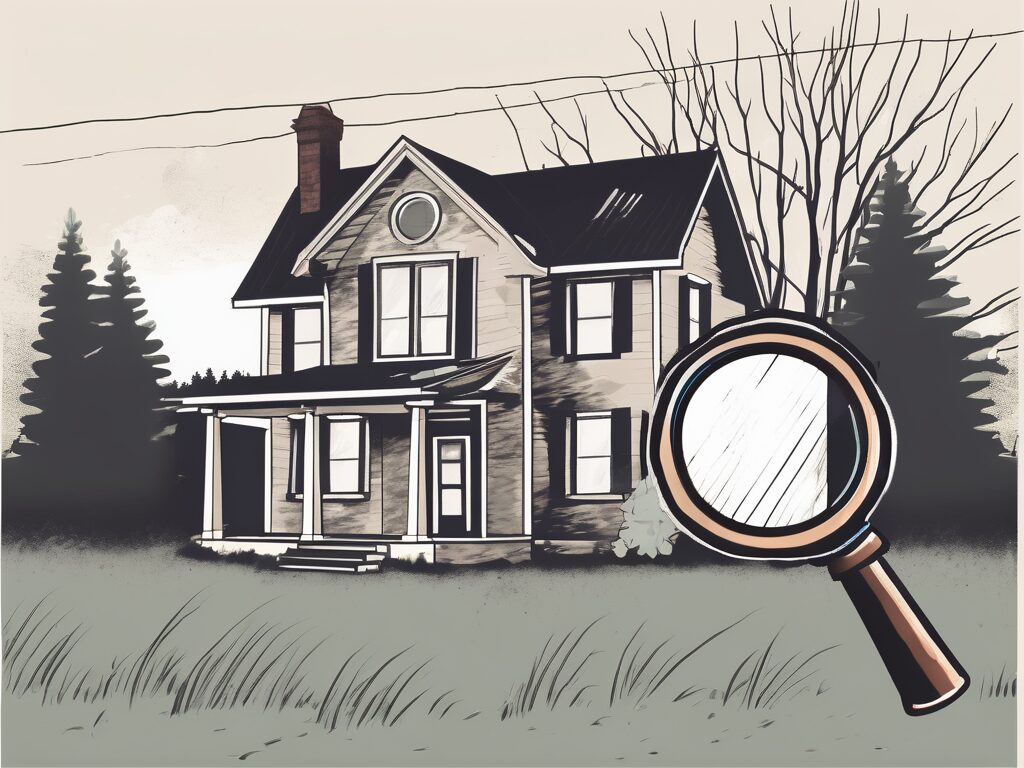
Agent A-Team or Solo Superhero? Finding the Right Real Estate Partner for Your Selling Journey in Wildwood Florida
When it comes to selling your home in Wildwood, Florida,…
January 29, 2024
Selling a house in poor condition can be a daunting task. Many homeowners are unsure of where to begin, feeling overwhelmed by the extensive repairs and renovations needed to attract potential buyers. However, it’s essential not to let misconceptions about home inspections discourage you from embarking on this journey. In this ultimate guide, we will debunk common inspection myths to help you navigate the process with confidence and sell your property successfully.
Home inspections are an integral part of the home selling process and often a source of anxiety for sellers. However, it’s crucial to separate fact from fiction. Let’s address some common misconceptions about home inspections:
One prevalent misconception is that a home inspection will uncover every flaw in your property. While professional inspectors thoroughly assess the house, they cannot detect hidden problems or predict future issues with certainty. It’s essential to consider inspections as informative tools rather than comprehensive guarantees.
However, this doesn’t mean that home inspections are not valuable. In fact, they play a crucial role in providing buyers with a clear understanding of the property’s current condition. Inspections help buyers make informed decisions and can also protect sellers from potential legal issues down the line.
Furthermore, it’s worth noting that home inspectors are highly trained professionals who follow industry standards and guidelines. They have a keen eye for identifying both visible and hidden issues, ensuring that buyers have a comprehensive report on the property’s condition.
Another myth is that sellers are required to rectify every defect discovered during an inspection. In reality, the repairs or improvements requested by the buyer are typically negotiable. Remember, the goal is to strike a fair deal that satisfies both parties while maximizing your profit.
During negotiations, it’s essential to consider the cost of repairs and the impact they may have on the final sale price. Some buyers may request minor repairs or offer a lower price to account for the necessary fixes. As a seller, you have the right to evaluate these requests and negotiate accordingly.
It’s also important to keep in mind that not all defects found during an inspection are deal-breakers. Some issues may be minor and easily fixable, while others may be more significant. By working with your real estate agent and understanding the market, you can determine the best course of action to address any repair requests.
When selling a house in poor condition, it’s crucial to understand what exactly qualifies as poor condition. While it may differ slightly from person to person, poor condition generally refers to significant structural, mechanical, or aesthetic issues that require attention.
However, it’s important to note that not all homes in poor condition are unsellable. Some buyers may be willing to take on a fixer-upper and invest in renovations, while others may be looking for a property with character and history.
It’s vital to distinguish between cosmetic enhancements and substantial repairs when evaluating the true condition of your property. Focusing on essential fixes to address safety concerns and major functional deficiencies can make a more significant impact on buyers’ perception of the house.
Additionally, highlighting the potential of the property can be a powerful selling point. If your home is in poor condition but has unique architectural features or is located in a desirable neighborhood, emphasizing these aspects can attract buyers who are willing to invest in the property’s potential.
Ultimately, selling a house in poor condition requires careful consideration and strategic marketing. By understanding the true meaning of poor condition and working with professionals in the real estate industry, you can navigate the selling process with confidence.
Now that we’ve debunked some inspection myths, let’s explore different approaches to selling a property in poor condition and negotiating a fair price.
When selling a house in poor condition, you have several options. One approach is to sell the property “as-is,” acknowledging its state and pricing it accordingly. This can attract buyers looking for a fixer-upper, willing to undertake the necessary renovations themselves.
Another approach is to consider selling the property to investors who specialize in buying distressed properties. These investors often have the resources and expertise to handle the necessary repairs and renovations, allowing them to sell the property at a higher price later on.
Alternatively, you can invest in specific repairs and improvements to enhance your home’s appeal. However, it’s crucial to assess the potential return on investment (ROI) before diving into costly endeavors. Conducting a thorough cost-benefit analysis can help you determine which repairs are worth pursuing.
Furthermore, you may want to explore the option of selling the property through a real estate auction. Auctions can create a sense of urgency among potential buyers, leading to competitive bidding and potentially driving up the final sale price.
Deciding when to invest in repairs is a critical step in selling a house in poor condition. Consider factors such as the current real estate market conditions, the property’s location, and the estimated cost of repairs.
While repairs can increase the value of a house, it’s essential to be mindful of overspending. Determine which repairs will yield the highest return and focus on addressing those first. For example, fixing structural issues or updating outdated features like the kitchen or bathroom can significantly impact the property’s value.
Additionally, consult with real estate professionals to gain valuable insights into market trends and buyer preferences. They can provide guidance on which repairs are most likely to attract potential buyers and help you negotiate a fair price.
Furthermore, consider obtaining multiple quotes from contractors to ensure you’re getting the best value for your money. Comparing prices and evaluating the reputation and experience of different contractors can help you make informed decisions about which repairs to prioritize.
Remember, the goal is to maximize your profit while still attracting buyers who see the potential in the property. By carefully strategizing and investing in the right repairs, you can negotiate a fair price that benefits both you and the buyer.
Navigating the intricacies of evaluating the cost-benefit of repairs will help you make informed decisions when selling your house in poor condition.
When it comes to selling a house in poor condition, it’s important to carefully consider the cost-benefit of repairs. Before spending money on any repairs, there are several factors that you should take into account.
Prior to spending money on repairs, consider various factors to determine if the investment aligns with your goals. Evaluate the state of the local real estate market, property values in your area, and the demand for homes in poor condition.
One important factor to consider is the state of the local real estate market. Is it a seller’s market or a buyer’s market? Understanding the current market conditions can greatly impact your decision-making process. In a seller’s market with high demand and limited inventory, buyers may be more willing to overlook some imperfections and focus on the property’s potential. On the other hand, in a buyer’s market with more available options, competing homes in better condition may hinder your chances of selling unless the repairs are strategically addressed.
Another factor to consider is the specific repairs needed. Take the time to assess the condition of your house and identify the repairs that are necessary. This could include fixing structural issues, updating outdated systems, or enhancing the curb appeal. Prioritize repairs that add value and appeal to potential buyers, ensuring a positive impact on your selling price.
Understanding the current market conditions is crucial when deciding on repairs. In a seller’s market with high demand and limited inventory, buyers may be more willing to overlook some imperfections and focus on the property’s potential.
Conversely, in a buyer’s market with more available options, competing homes in better condition may hinder your chances of selling unless the repairs are strategically addressed. Adapt your repair decisions to align with market conditions and buyer expectations for optimal results.
Assessing the competition is vital to position your property correctly in a market where homes in poor condition are prevalent. Research comparable properties and their sale prices to understand the potential return on your investment.
Analyzing the potential return on investment (ROI) will help you determine which repairs are worthwhile and which can be avoided, ensuring that you maximize your profit when selling your house in poor condition.
As inspections play a crucial role in the home selling process, it’s essential to proactively address potential issues before they become deal-breakers. Ensure transparent communication with buyers, disclosing the accurate condition of your property and any repairs completed.
Prepare for negotiations by understanding the findings of the inspection report and be willing to negotiate reasonable repairs or pricing adjustments. Maintaining open dialogue and a cooperative attitude can lead to successful resolutions that benefit both parties.
By carefully evaluating the cost-benefit of repairs and considering market conditions, competition, and potential ROI, you can make informed decisions when selling your house in poor condition. Navigating inspections and negotiations with transparency and flexibility will help ensure a smooth selling process.
Selling a house in poor condition requires careful planning and execution. Consider these expert tips to enhance your chances of a successful sale:
Professional home staging can work wonders in transforming a house in poor condition into a visually appealing space. By strategically arranging furniture, adding tasteful decor, and optimizing the flow of each room, professional stagers can help potential buyers envision the possibilities. They have a keen eye for highlighting the positive aspects of a property, making it easier for buyers to see beyond its current state.
Every house has its own unique features that can make it stand out from the competition, even if it’s in poor condition. Whether it’s an original fireplace, a spacious backyard, or architectural details, make sure to emphasize these selling points in your marketing materials. By showcasing what makes your house special, you can capture the attention of potential buyers who are looking for something unique.
In today’s digital age, online presence is crucial when selling a home. To make your property shine, invest in professional photography that captures the best angles and highlights the potential of each room. Additionally, consider offering virtual tours or 3D walkthroughs to give potential buyers a comprehensive view of the property. By providing visually appealing and interactive online content, you can attract more interested buyers and increase the chances of a successful sale.
Working with a real estate agent who specializes in selling properties in poor condition can be a game-changer. These agents have a deep understanding of the market and know how to position your property effectively. They can provide valuable advice on pricing, marketing strategies, and negotiating with potential buyers. With their expertise, you can navigate the challenges of selling a house in poor condition and increase your chances of a successful sale.
When selling a house in poor condition, honesty is key. It’s important to be transparent about any issues or repairs that need to be addressed. By providing accurate and detailed information upfront, you can establish trust with potential buyers. This transparency will not only help manage expectations but also attract serious buyers who are willing to invest in the necessary renovations. Building trust from the start can lead to smoother negotiations and a higher likelihood of closing the sale.
When selling a house in poor condition, it’s crucial to determine the fair market value to avoid overpricing or underselling your property.
Engage a reputable appraiser or consult with local real estate professionals to evaluate the true value while considering the condition of your house. Their expertise and insight into market trends will help you set a competitive price that attracts buyers and generates interest.
Your property’s value extends beyond its current state, leveraging potential, and market demand. By uncovering the true value of your house, you can optimize your selling strategy and achieve a successful sale.
One important aspect to consider when determining the true value of your property is its location. The neighborhood in which your house is situated can greatly impact its value. Factors such as proximity to schools, parks, shopping centers, and transportation options can make your property more desirable to potential buyers. Additionally, the overall safety and security of the area can also play a significant role in determining the value of your house.
Another factor to consider is the size and layout of your property. A larger house with more bedrooms and bathrooms will generally have a higher value compared to a smaller one. The flow and functionality of the layout can also influence the perceived value of the property. A well-designed and spacious layout can make a house feel more inviting and appealing to buyers.
Furthermore, the condition of your house plays a crucial role in determining its value. While selling a house in poor condition may seem challenging, it’s important to remember that there is still potential for improvement. Highlighting any unique features or potential renovations that can be done to enhance the property can help increase its value. Additionally, addressing any necessary repairs or maintenance issues before listing the house can also positively impact its value.
Market demand is another key factor to consider when determining the true value of your property. Understanding the current real estate market trends and the demand for houses in your area can help you set a competitive price. If there is a high demand for properties in your neighborhood, you may be able to price your house slightly higher. On the other hand, if the market is saturated with similar properties, you may need to adjust your price accordingly to attract buyers.
In conclusion, selling a house in poor condition requires a thorough understanding of home inspections, strategic decision-making when it comes to repairs, and effective negotiation skills. By debunking inspection myths and following our comprehensive guide, you can navigate this challenging process with confidence, ultimately achieving a successful sale while maximizing your profit.

If you want the Richr team to help you save thousands on your home just book a call.
 Book a call
Book a call